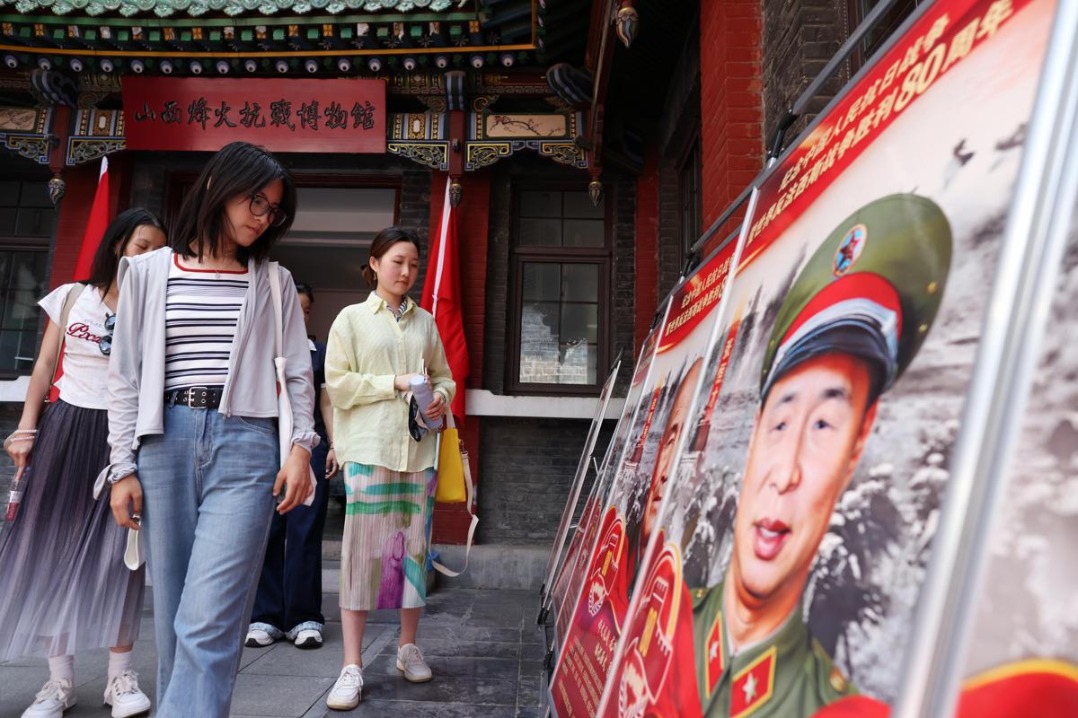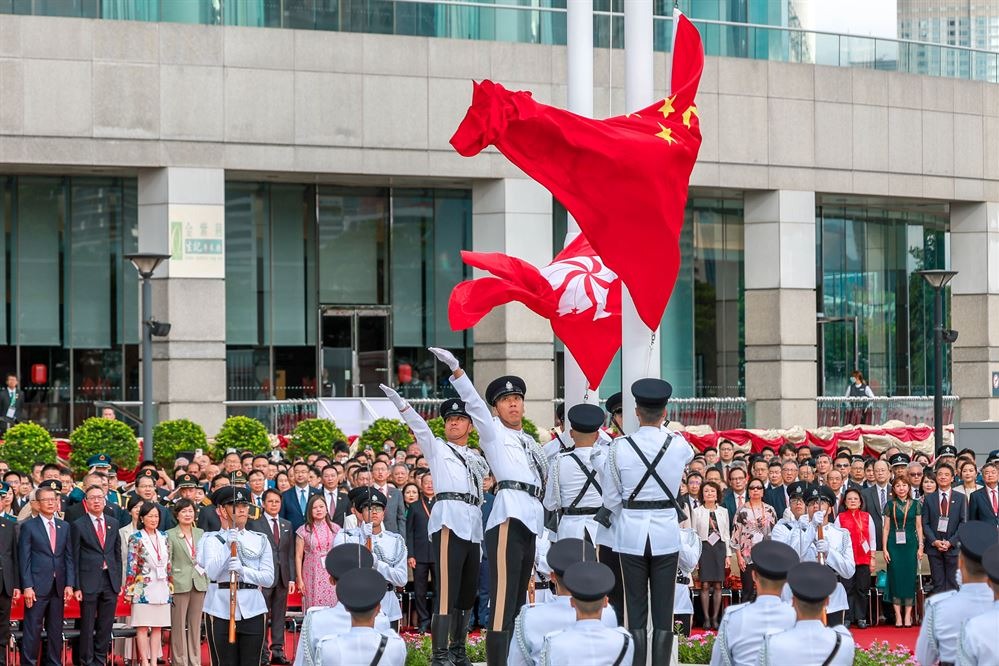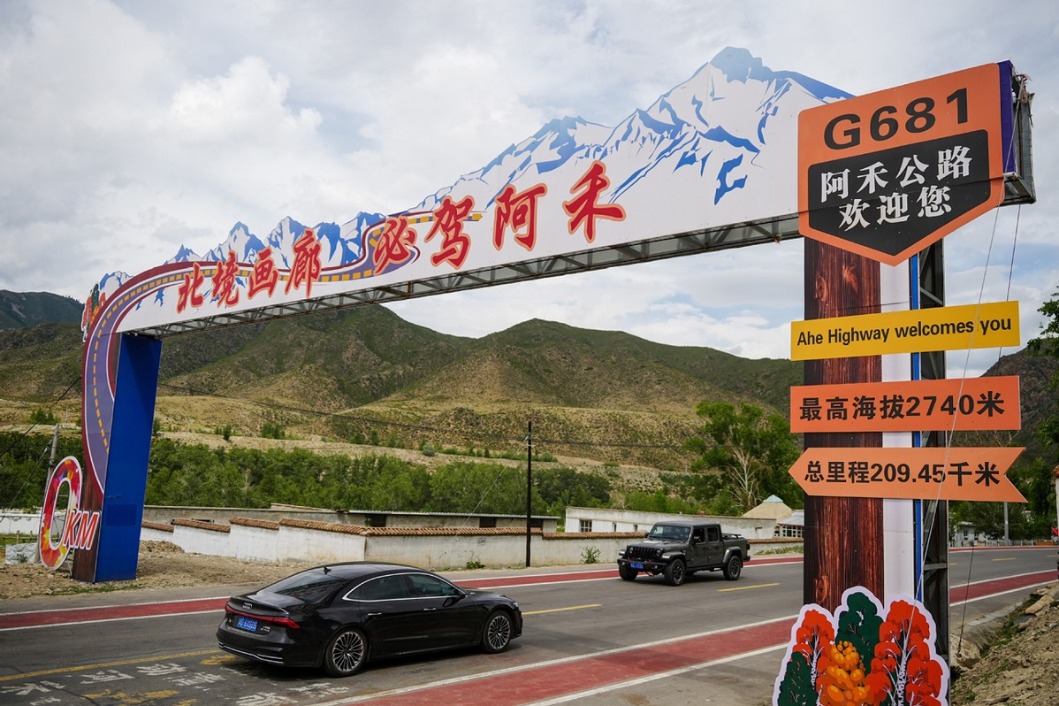Buckling up for common goals
Architect Nicholas Ho Lik-chi has found himself in an unusual job as head of Belt and Road for Hong Kong. He tells China Daily's Stacy Shi one of his key aims is to help Chinese mainland companies go global, calling Hong Kong a 'beacon of stability' for emerging economies.


Editor's note: The future belongs to those who dare to shape it. In this series, China Daily highlights the bold thinkers and doers who are transforming industries and breaking barriers. Meet Nicholas Ho Lik-chi, an architect following his family legacy, who now serves as Hong Kong's Belt and Road commissioner, strengthening the city's role as superconnector for collaboration in an era of swiftly changing geopolitical realities.
Designing buildings is akin to doing business. Tapping new markets and making Hong Kong shine on the world stage is what eminent architect Nicholas Ho Lik-chi is committed to pursuing in his role as commissioner for Belt and Road of the Hong Kong Special Administrative Region - pushing the SAR's full involvement and role as a vital platform in the global project.
He found himself thrust into the international spotlight as part of a high-profile delegation led by Chief Executive John Lee Ka-chiu to the Middle East last month to tap business opportunities for Hong Kong and promote what the city can offer to entrepreneurs from one of the world's most affluent regions. Unlike his specialty as an architect - an area in which he has left a physical legacy on foreign soil - Ho now seeks to build an intangible legacy of connectivity in a largely untapped market.
Fresh from the visits to Qatar and Kuwait, he sat down with China Daily for an interview, outlining his goals and Hong Kong's potential role in the Belt and Road Initiative, ahead of a similar mission to Southeast Asia in late June.

The tour of the Gulf states brought together officials, as well as prominent entrepreneurs, from Hong Kong and the Chinese mainland for the first time, underscoring the SAR's unique values as a superconnector and super value-adder for the BRI.
Nearly 60 memorandums of understanding and agreements were clinched in Qatar and Kuwait, including a three-party pact signed by the mainland, Hong Kong and Qatar to boost connectivity in wide aspects of financial technology, covering Web3 and artificial intelligence.
Ho says the SAR has a dual function in the BRI - as a launch pad for both Hong Kong and global enterprises headquartered in the city to access BRI markets, and as a platform for mainland businesses, many with excellent products and projects but lacking overseas experience, providing them with the tools, connections and market know-how to expand into emerging economies.
"Hong Kong, with its unique 'one country, two systems' advantages, a world-class talent pool and professional services, is the natural, ideal springboard," says Ho, citing a mainland startup that set up its international headquarters in the city and launched autonomous vehicles at Hong Kong International Airport before expanding its operations to Qatar.
Leveraging Hong Kong's twofold task, Ho sees lowering business thresholds as paramount for unlocking opportunities, citing new direct flights, visa-free arrangements with members of the six-nation Gulf Cooperation Council, and customs partnerships established through more than 10 government-to-government cooperation agreements, as "tangible wins".
Beyond business and logistics exchanges, he emphasizes the importance of building cultural soft infrastructure, such as expanding halal services and hosting Qatari art exhibitions in Hong Kong.
Forging respect and understanding, he insists, is the bedrock of long-term collaboration.
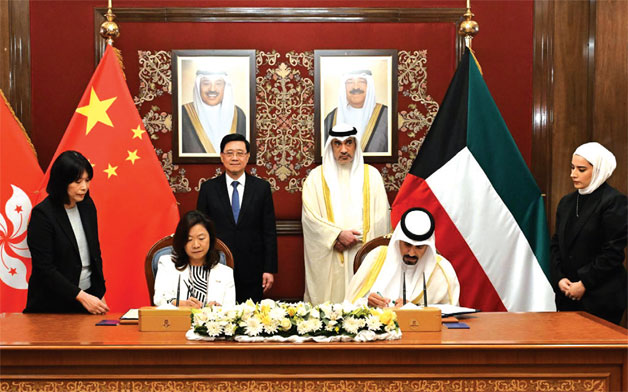
Scaling new heights
Ho's professional journey - from designing physical structures to shaping intangible economic corridors - mirrors Hong Kong's own evolution from a participant and beneficiary of the mainland's reform and opening-up boom to a bridge linking China with world markets.
Ho built his architectural career by identifying untapped opportunities and seizing them decisively - a trait he shares with his father, renowned architect Bosco Ho Hin-ngai, who designed the city's iconic skyscraper, The Westpoint, in Sai Ying Pun, Hong Kong Island.
Bosco Ho founded Ho & Partners Architects Engineers & Development Consultants in 1980, cashing in on the bonanza from the nation's reform and opening-up and rapid urbanization.
The junior Ho, who was raised in Hong Kong and educated in the United Kingdom, recalls that although his father had never "intentionally" steered him to take up architecture as a profession, he ultimately found himself drawn to following in his father's footsteps.
His dedication to the BRI vision took shape remarkably early. In 2013, the same year the initiative was launched, Ho joined his family's business, seeking to scale new heights on his father's shoulders.
Inspired by the BRI framework, he ventured into Southeast Asian markets in 2014 but found himself confronted with unprecedented challenges upon entering Malaysia - an economic recession had just kicked in, triggering currency devaluations that resulted in half of his capital evaporating. Yet, true to what he describes as his "steadfast" nature, Ho doubled down on the market, turning adversity into a promising ground for his long-term commitment to regional connectivity, with his family business office there up and running within two years.
Unwittingly, he has emerged as a "bridge" between his business and SAR government policy circles by joining government-led visits to emerging markets as a business representative, including a trade mission led by then-chief executive Leung Chun-ying to India, in 2016.
The dual strands of professional skills and policy insight came together in 2023 when, after nearly a decade of frontline BRI engagement, Ho was appointed commissioner for Belt and Road of the HKSAR.
Ho envisages a double strategy for Hong Kong's gateway role under the BRI's "going out" and "bringing in" drive as the initiative enters its second decade.
Organizing more trade visits to the world's emerging markets will continue, and welcoming mainland representatives to Hong Kong, he believes, will be of huge benefit, helping to support not just large corporations, but also small and medium-sized enterprises and professional service providers. Conversely, the "bringing in" approach focuses on attracting flagship BRI projects.
Ho says the annual Belt and Road Summit has evolved into a major regional platform that attracts both business and political leaders to take part. Beyond the main event, a number of side forums organized by private companies, chambers of commerce, and universities to highlight BRI opportunities in trade, education, and culture are set for its 10th edition in September.
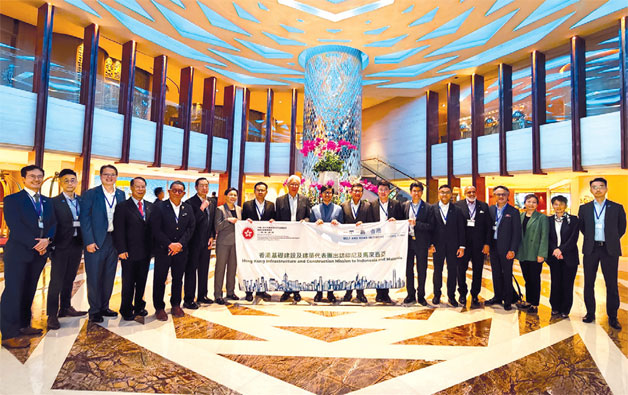
Exploring broader markets
While prioritizing markets in the Association of Southeast Asian Nations and the Middle East, Ho says Hong Kong also eyes domestic opportunities, such as deepening collaboration with the Xinjiang Uygur autonomous region, given its geographical and economic ties with Central Asia and its strategic position as a gateway to Eastern Europe.
Beyond these key regions, the SAR government is expanding its footprint in South and West Asia, as shown by the launch of offices of InvestHK - the city's investment promotion agency - in Egypt in 2024 and in Turkiye this year. Further expansion is underway with economic trade offices set to open in Kuala Lumpur and Riyadh, while existing partnerships in sub-Saharan Africa and Latin America will also be maintained.
Entering new BRI markets, whether they are in the Middle East or Southeast Asia, presents hurdles for companies, such as navigating cultural norms, local regulations and market intelligence gaps. This is where Hong Kong's curated support comes in by providing dedicated funding for SMEs with limited global expansion resources, forging critical market connections, and strengthening aviation and logistics networks, helping to turn these challenges into viable opportunities.
With Hong Kong ranking second in Asia and seventh globally for its infrastructure capabilities in the IMD World Competitiveness Report 2025, the city's strengths in engineering, architecture, design, and surveying position it well to collaborate with emerging economies in infrastructure projects.
Ho, who just concluded his visit to Indonesia and Malaysia with a delegation of representatives from Hong Kong's professional and commercial sectors, says these strengths can make the SAR a key player in supporting the infrastructure goals of the two countries.
"Infrastructure is the backbone of any thriving economy," says Ho, as it "represents the foundation for a sustainable future". He pledges to help Hong Kong investors and professional services firms collaborate with local players in the two countries in their infrastructure development.
For high-potential sectors, Ho points to green development in the near future, capitalizing on Hong Kong's strengths in green finance, sustainability-aligned professional services, and a vibrant climate-tech ecosystem. Equally critical is education and talent development, where the city's five top-ranked global universities and the "Study in Hong Kong" brand position the city as a hub for nurturing talent and fostering international research collaboration, as well as tightening people's bonds with BRI markets.
Having served half of his three-year term as Belt and Road commissioner, Ho says one of his key objectives is to support private mainland enterprises, particularly SMEs, in their global expansion drive.
"The mainland has close to 50 million private companies or SMEs, many of which are ready, but lack the resources or expertise to go global. We can offer them opportunities and a safe platform. And, I think, with that, this can help generate economic impact and growth for Hong Kong, not just in one direction, but a two-way flow," he says.
Reflecting on his decade's experience in Belt and Road markets, Ho has seen a significant shift in investor perspectives. Where companies and investors had once viewed emerging markets merely as interim stops to access developed economies, they now recognize the BRI participating regions, with their young and dynamic populations, as a final destination in itself, and that Hong Kong is perfectly suited for them to tap into the market.
In the same office, where a year ago Ho told a television program his design for Hong Kong as a building would incorporate international and diverse elements with the flexibility to adapt to change, he has now expanded the metaphor to address today's geopolitical fragmentation.
In an era of swiftly changing geopolitical realities, he says, Hong Kong has evolved from being merely a bridge into a "beacon of stability" under "one country, two systems" for many economies.
Such stability is what all nations are determined to pursue in a turbulent world, he adds.
Contact the writer at stacyshi@chinadailyhk.com
- 2,000-year-old steel acupuncture needles unearthed in Jiangxi
- New carbon neutrality initiative launched in Beijing
- Three killed in downtown Guangzhou traffic accident
- How does the eight-point code profoundly change China?
- Xizang's first guide dog helps his owner break barriers
- AI revives 80 war veterans at memorial hall in Taiyuan


















